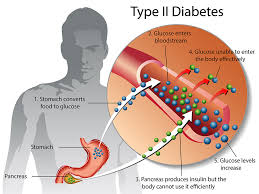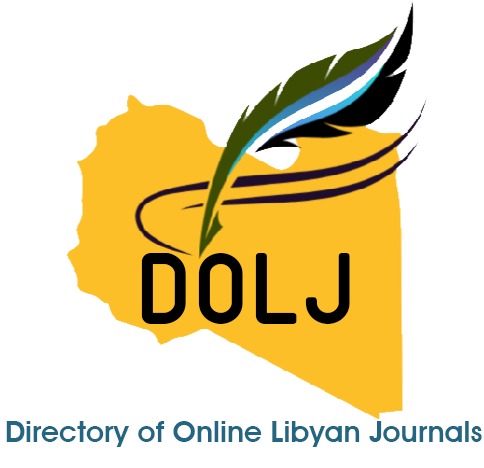Tracking the Burden of Type 2 Diabetes Mellitus Among Libyan Patients in Three Populated Districts of Tripoli, Libya
DOI:
https://doi.org/10.69667/rmj.25408Keywords:
Lipid Profile, Haematological Parameters, Type 2 Diabetes Mellitus, Dyslipidemia, Districts.Abstract
The rising global incidence of Type 2 Diabetes Mellitus (T2DM) is a major contributor to increased morbidity and mortality. Research consistently links type 2 diabetes mellitus (T2DM) with various hematological and lipid abnormalities. However, studies in Libya that examine the relationship between these factors in T2DM patients and correlate them with geographical distribution are scarce. This study aims to evaluate the variations in hematological and lipid profiles among Libyan individuals with type 2 diabetes mellitus (T2DM) and to investigate potential correlations between these parameters. Additionally, it seeks to conduct T2DM surveillance in densely populated regions. A cross-sectional study was conducted at laboratories located in three different districts of Tripoli: Ghout Al Shaal Specialized Hospital, Abu Salim Hospital, and Al Sarai Laboratory in Hay Al Andalus. A total of 261 Libyan participants were divided into 170 patients with type 2 diabetes and 91 non-diabetic (controls), aged 50-85 years. Anthropometric data (weight, height, and body mass index (BMI)) were measured using standard protocols. Complete blood count (CBC) and lipid profile analysis were measured using the Sysmex XP-300 automated hematology analyzer and the Roche Cobas Integra 400 Plus system, respectively. Data were analyzed statistically using GraphPad Prism and SPSS version 27. A p-value of <0.05 was considered statistically significant. -value of <0.05 was considered statistically significant. T2DM subjects exhibited a higher body mass index (BMI) across study groups, genders, and districts (p<0.001) and demonstrated a statistically significant increase in red blood cell (RBC) counts (p=0.018) when compared to controls. Gender analysis indicated that diabetic women had a slightly higher RBC count (p=0.02), while men showed elevated neutrophil percentages (p=0.046). District-specific analyses revealed distinct trends. In Abu Salim, both hemoglobin (Hb) concentrations and RBC counts were high (p=0.036 and p=0.012, respectively). In Hay Al Andalus, mean cell volume (MCV) was significantly lower, and white blood cell (WBC) counts were higher (p=0.031 and p=0.022, respectively). In Ghout Al Shaal, significantly higher neutrophil percentages (p<0.001) and lower lymphocyte percentages (p=0.005) were found among diabetics. Additionally, the diabetic group exhibited substantially high levels of HbA1c, fasting blood sugar (FBS), and triglycerides (TG) (p<0.001). While diabetic women aligned with these trends, the male subgroup displayed similar glycaemic levels but exhibited less pronounced lipid differences. Notably, lipid variances were only observed in Hay Al Andalus; diabetic participants had lower high-density lipoprotein cholesterol (HDL-C) and higher TG (p=0.02 and p=0.001, respectively). T2DM Libyan patients suffer from increased adiposity and poor glycemic control. Distinct lipid abnormalities were also observed among patients, but these are commonly seen in women. Patients in the Hay Al Andalus region had the most devastating dyslipidaemia compared to other districts. Moreover, the observed variations in blood indices may be attributed to chronic inflammation, disease severity, and potential hypoxia, influenced by gender and geographic factors. Our findings may offer valuable guidance for prevention and clinical management strategies for T2DM patients in Tripoli.

Downloads
Published
Issue
Section
How to Cite
Similar Articles
- Hawa Abduljalil, Tarik Enaairi, Striae Gravidarum and Its Effect on the Quality of Life Index in Libyan Pregnant Women , Razi Medical Journal: Volume 1, Issue 1, 2025
- Abulgasem Dakhil, Mohamed Abuagela, Abdul Aty Dakhil, Wasim Elarbi, Aisha Elansari, Evaluation of Uterine Fibroids Among Women in Tripoli , Razi Medical Journal: Volume 1, Issue 2, 2025
- Shahrazad Ahmed, Neyaf Alageedi, Eman Muhsin, Doaa Abdulwahab, The Role of Immune Response in Bacterial Urinary Tract Infections in Iraq: A Review , Razi Medical Journal: Volume 1, Issue 2, 2025
- Zinab Elfituri, Huria Dardar, Yasmein Alshibani, Aml Koubas, Entisar Aboukanda, Abdalhalim Suaiee, The Impact of Lifestyle Factors on Arterial Blood Pressure and Its Control in Hypertensive Patients , Razi Medical Journal: Volume 1, Issue 2, 2025
- Fatima Elhag Ahmed, Susan Zroog, Abdelhakam Ali, Nurses' Knowledge regarding Immediate Care of Newborns in the Saudi Hospital for Obstetrics and Gynecology, Sudan , Razi Medical Journal: Volume 1, Issue 3, 2025
- Faraj Atiyah, Rabihah Hamad, Munyah Hammad, Impact of Salt Stress on Pea (Pisum sativum) Physiological Features in Lab Settings , Razi Medical Journal: Volume 1, Issue 2, 2025
- Safa Mohammed Salim, Molecular Cytogenetic Study of Chronic Lymphocytic Leukemia Patients Diagnosed in Erbil City Using Fluorescence in Situ Hybridization (FISH) Technique , Razi Medical Journal: Volume 1, Issue 2, 2025
- Mufeedah Mansour, Khoulah Alaribi, Prevalence and Outcomes of Coagulase-Negative Staphylococci in Newborns Admitted to the NICU in a Tertiary Hospital in Libya , Razi Medical Journal: Volume 1, Issue 2, 2025
- Wesam Elsaghayer, Wafaa Babh, Ali Shagan, Misbah Elfagih, Esraa Obida, Ebrahim Elmahjoubi, Mohamed Bashagha, Mohamed Elfagieh, Sentinel Lymph Node Metastasis in Breast Cancer: The First Libyan Report with Hormonal Profiling and International Comparison , Razi Medical Journal: Volume 1, Issue 3, 2025
- Asma Buzgeia, Nazik Hamad, Emaduldin Ateeyah, Mohamed Mohamed, Mohamed EL Fakhri, Utilizing Resources of Drug Information among Community Pharmacists in Benghazi and the Surroundings , Razi Medical Journal: Volume 1, Issue 2, 2025
You may also start an advanced similarity search for this article.








